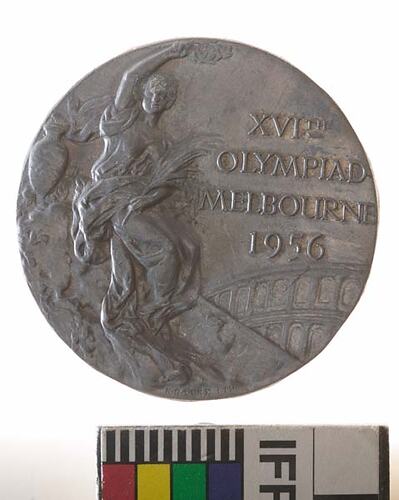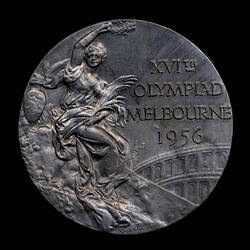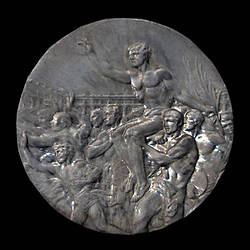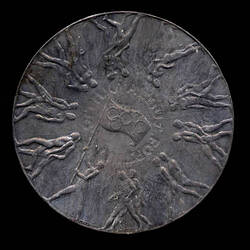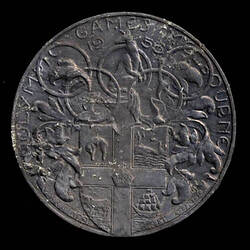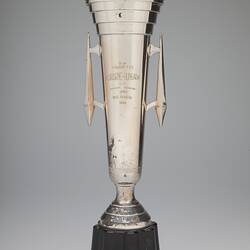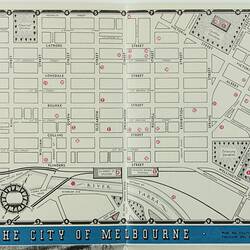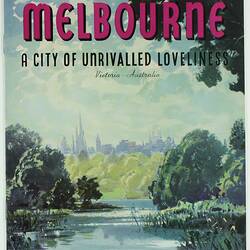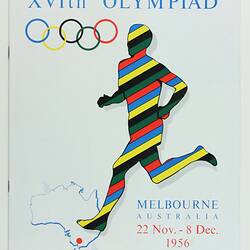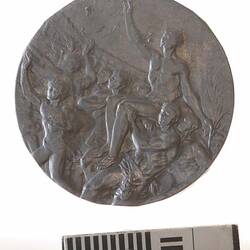The Melbourne Olympic Committee was specifically responsible for the Organisation of the 1956 Games. It was answerable to the International Olympic Committee.
Between 1949 and 1955 there were several occasions when the International Olympic Committee threatened to withdraw the Games from Melbourne because of financial uncertainties, slow venue construction and other problems.
A major problem for the Olympic Committee was financial security, with both the Federal and the Victorian Government warmly supporting Melbourne's bid for the Olympics but without firm financial guarantees. In the end the Federal and State governments largely shared Olympic construction costs and Melbourne did not suffer any significant financial loss from staging the Games.
Melbourne's Olympic Committee utilised every means available to advertise the Games. Its strategies were sometimes creative. Qantas agreed to hand each passenger an envelope containing a personal letter asking them to act as an unofficial spokesman for the Games and giving specific points about the Melbourne Games to stress overseas. The Committee estimated that between 500 and 600 people could be recruited in this way. Australian exporters were also targeted for advertising distribution. For example, an Olympic folder was included with every set of bowls exported by the Henselite Bowls Company. The company exported around 10,000 sets a year to some twenty countries.
The Committee was directed to avoid commercialism in the Games' publicity. However, the Press and Publicity Sub-committee of the International Olympic Committee noted in August, 1956 that 'the enormous amount of propaganda that the world has been receiving over the past few years in relation to the games in Melbourne has undoubtedly paved the way for Australia to be boosted from a tourist or an industrial development point of view.'
The Committee also went to surprising lengths to see that visiting journalists had a favourable impression of Melbourne and of the Games organisation. The Committee had booked 1000 rooms, planning for 800 reporters and 150 photographers. Plans were made for generous press hospitality, including Australian fruit, wines and spirits in each hotel room, as well as cigarettes, bookmatches, Australian literature and guide books. In the end the number of press representatives was less than anticipated with 589 reporters and 75 photographers attending the Games.
The Committee and the networks reached an agreement for three minutes of free Olympics coverage in television news programs, but there was disagreement about the content of that three minutes. The networks showed the news three times a day and wanted a different three minutes of Games coverage for each broadcast. The Committee was not happy about allocating a total amount of free time that would be longer than the official film of the Olympics, being produced commercially.
A dispute also arose about whether the Olympic Games were free news or paid entertainment. The Melbourne Olympic Committee members were emphatic that they had to protect future Olympic interests. Television was seen as providing the Olympic Games with the prospect of a large new audience and the Committee was anxious to establish the principle of media payments for future Games. The major networks boycotted the Games and television coverage was not as extensive as hoped. But ultimately the Melbourne Olympics did gain revenue from television rights. Local television was charged only a nominal fee as it was not felt to be a threat to attendance numbers at the Games - at the time only 5,000 television sets had been sold in Australia.
References:
State Library of Victoria Melbourne Olympic Games 1956 website http://www.slv.vic.gov.au/slv/exhibitions/olympics/preps/publicity.html
More Information
-
Keywords
-
Localities
-
Authors
-
Article types
